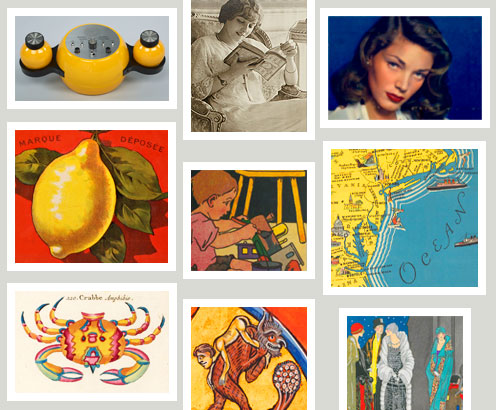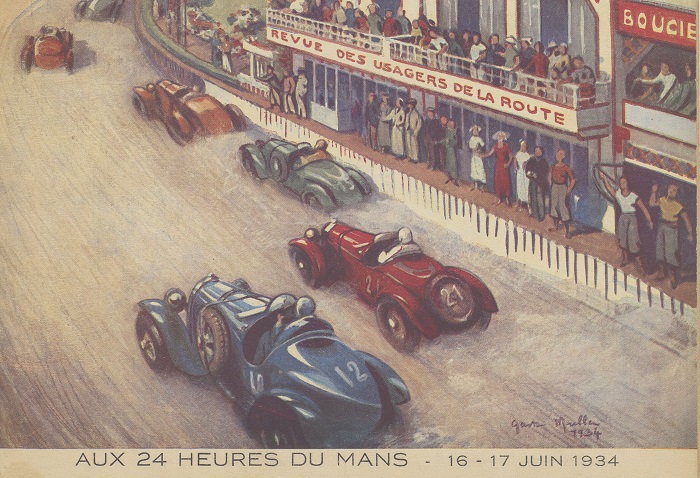The French Manufacturers at The 24 Hours of Le Mans (4 / 6)
Which are the French Manufacturers that put themselves in a highlight at the Le Mans 24 Hours race ? How did some who used the racing experience promote from an artisanal activity to an industrial-style organization ?
Revue des usagers de la route, Bibliothèque municipale du Mans
The 24 Hours of Le Mans: A Story of Human Relationships and Meetings
We remember from our first episode that the idea to organize a 24 hours race at Le Mans was born during a meeting at the Paris Motor Show in 1922 between three racing enthusiasts and visionaries (George Durand, Charles Faroux, Emile Coquille).
Behind the scenes of the paddock, racecars, or drivers we will always find fabulous stories of human relationships, meetings, projects, ideas, innovations, emotions, dreams, victories, losses, or the cruelty of racing accidents. For some drivers or teams, nothing but being present at the race's start is a win in itself, after huge efforts and sacrifices. On the track, as in life at some point, there are winners and losers, few take the glory they have dreamed of, and others finish ruined with their dreams broken down.
Amid good results or successes at Le Mans, some artisanal manufacturers will become successful businesses and industrial organizations in the automotive field. Let’s discover together some French manufacturers that successfully put themselves in a highlight at Le Mans.
Chenard and Walcker: The First Winner
The Chenard and Walcker brand, based in Gennevilliers, on the outskirts of Paris, was founded in 1888 by Ernest Chenard. After a meeting with Henry Walcker, a former customer, a joint venture is born and the company name becomes Chenard and Walcker in 1899.
.The 24 Heures of Le Mans, team Chenard Walcker, 25 mai 1923, Agence Rol
Amid a robust commercial development, cumulated with public and media success after the win at the 24 Hours of Le Mans in 1923, the factory becomes one of the most important French carmakers in the 1920s. They had 4500 employees in 1925. The company will be absorbed by the Chausson Group, due to the economic context of the 1930s. After WWII, Chausson is the official Peugeot manufacturer for utility vehicles.
Lorraine-Dietrich: The Consecration due to Racing Success
The company based at Luneville in Lorraine is specialized in railways heavy compounds. It is managed by Baron Eugène de Dietrich and his nephew Adrien de Turckheim, a car enthusiast and racing driver. They wish to diversify their activity and therefore they will buy a patent from Amedée Bolée son in order to manufacture their own car.
During the Paris Motorshow in 1901, de Turckheim will meet two passionate engineers Léon Turcat and Simon Méry. They used to assemble their own cars in Marseille.
Following their collaboration, the company “Société Lorraine des anciens Etablissements de Dietrich et Cie de Lunéville” will produce their first Lorraine-Dietrich car in 1902. During this period the brand’s technical department will be managed by a young and genius engineer: Ettore Bugatti.
The Lorraine-Dietrich B3-6 race cars will win the Le Mans 24 Hours race, in 1925 and 1926. Moreover, in 1926 they occupied the first three places overall, a premiere for the race. The invention and the use of a third, anti fog, headlight will undoubtedly contribute to that success.
Le Mans, Endurance Race, Bloch et Rossignol on Lorraine-Dietrich, 13 juin 1926, Agence Rol
Despite the fact that they never won the race overall, some other French automotive brands that participated in the 24h of Le Mans deserve to be remembered: Salmson (Société des Moteurs Salmson), Tracta (première voiture de course à traction), la S.C.A.P. (Société de Construction Automobile Parisienne), Brasier, Rolland-Pilain, EHP (Etablissement Henri Précloux), Jousset, Bignan, Delage and others.
Tes 24 Hours of Le Mans, Victor-Hasley, Casse et André Rousseau on car Salmson, 19 juin 1927
Endurance Race of Le Mans, team SCAP, 19 juin 1927, Agence Rol
Endurance Race of Le Mans, Bussienne et de Costier on E.H.P, 13 juin 1926, Agence Rol
Endurance race of Le Mans,on car Rolland Pilain, 13 juin 1926, Agence Rol
Other Wins by French Manufacturers and the Consecration for Matra
Bugatti will win the 1937 and 1939 editions with an iconic model: Type 57. One of its drivers is the French Jean-Pierre Wimille, considered one of the most talented of his time. The Parisian brand Delahaye will win the race in 1938 with the type 135.
In 1950, the French driver Louis Rosier will create history, by driving alone for 23 hours in a row. He was replaced by his son and co-driver Jean-Louis Rosier, at the end of the race for the last couple of laps. They will register the first and only win of the French manufacturer Talbot.
Amedée Gordini, a talented engineer and race driver will go to Le Mans with his own cars. Despite proving good potential, they will never meet the overall success in the race. Nevertheless, Gordini will have good commercial success with its road model Simca Huit Gordini, following his joint venture with FIAT.
In the 1970s, pushed by the iconic entrepreneur Jean-Luc Lagardère, the Matra Simca's prototypes created history for the French manufacturers through three in a row overall wins: from 1972 to 1974.
Despite their involvement in racing since their beginning, the nowadays automotive brands Peugeot and Citroën haven’t raced in Le Mans as official works teams before the ’90s. Renault Sport won the 1978 edition in collaboration with its sports brand Alpine.

Cultural Olympiad is a multidisciplinary artistic and cultural program which runs from the end of the previous Games to the end of the Paralympic Games.
The Gallica series « Centenary of The 24 Hours of Le Mans » is part of the official Paris 2024 programming.












Ajouter un commentaire